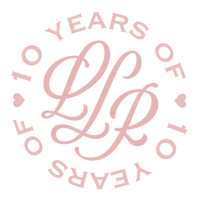Ever found yourself browsing through a jewelry store, admiring all those shiny pieces, but totally lost when you hear terms like “karat” or “plating”? You’re not alone! The jewelry world has its own special language, but don’t worry—I’m here to break it down in the simplest way possible. Whether you’re just shopping around or maybe you’re getting into jewelry yourself, these are the top 10 common terms you’ll come across in the retail jewelry space (without getting too technical!). Let’s dive in!
1. Karat (K)
First up, we’ve got karat, and no, I’m not talking about the vegetable. Karat is the term used to measure the purity of gold. Pure gold is 24 karats, but it’s often mixed with other metals for strength. So, if you see something labeled 18K, it means 18 parts of gold and 6 parts of other metals. Basically, the higher the karat, the more gold content.
2. Plating
Plating refers to a thin layer of one metal applied on top of another metal. In jewelry, you’ll often see gold-plated or silver-plated items. For example, a necklace might be made of brass but coated with gold to give it that luxe look without the high price tag. It looks fancy, but just know, it’s not solid gold!
3. Sterling Silver (925)
Sterling silver is your go-to silver if you’re looking for quality. It’s made up of 92.5% pure silver (hence the 925 stamp you’ll often see), and the rest is other metals like copper. Why? Because pure silver is too soft for everyday wear, so the other metals help give it some strength.
4. Vermeil
Okay, this one sounds a little boujee, but it’s really just a fancy way of saying gold-plated silver. Vermeil (pronounced vur-MAY) is sterling silver that’s been coated with a thick layer of gold. So, if you want something that has the luxe feel of gold but at a silver price point, vermeil is a great option.
5. Gemstone
Gemstones are the little colorful pieces you often see in jewelry, like diamonds, rubies, sapphires, and emeralds. They can be precious (the expensive, rare ones like diamonds) or semi-precious (more affordable but still beautiful ones like amethyst or citrine). They add sparkle, color, and personality to any piece!
6. Cut
When you hear someone talk about a diamond’s cut, they’re not talking about the shape (though it’s kinda related). Cut actually refers to how well a diamond has been shaped and faceted. A well-cut diamond reflects light beautifully, making it super sparkly. So, when you’re looking at a diamond, the cut can be more important than size!
7. Clarity
Clarity measures how clean or clear a gemstone, usually a diamond, is. This means checking for any tiny imperfections or “inclusions” inside the stone. The fewer inclusions, the higher the clarity, and usually the higher the price! But don’t stress too much—sometimes you can’t even see those tiny imperfections without a magnifying glass.
8. Carat (ct)
Not to be confused with karat, carat (with a C) measures the weight of gemstones, especially diamonds. The higher the carat, the bigger the stone. So, when people talk about a 1-carat diamond, they’re referring to its weight, not its size—though, obviously, a bigger carat usually means a bigger stone.
9. Setting
The setting is how the gemstone is placed or secured in the jewelry piece. Common settings include prong, bezel, and channel. Prong settings hold the stone with little metal claws, while bezel settings surround the stone with a metal rim. Each setting can change how a stone looks and how securely it’s held in place.
10. Hallmark
A hallmark is a little stamped symbol on your jewelry that tells you the metal content. For example, if you see “925” stamped on a silver ring, that means it’s sterling silver. Gold will often have stamps like 14K or 18K. It’s like a tiny certificate of authenticity that helps you know what you’re really getting.
And there you have it! The next time you’re shopping for jewelry or even talking to a jeweler, you’ll sound like a total pro with these terms in your back pocket. Whether you’re after gold, silver, or a bit of sparkle, understanding these basic terms makes the whole process a lot more fun (and less confusing!). Happy shopping! ✨
















































